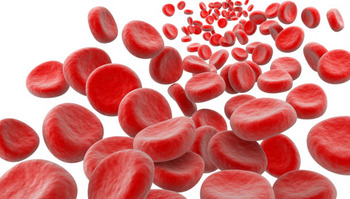What’s in a Cell?
| Tweet |
By Billie Rubin, Hemoglobin’s Catabolic Cousin, reporting from the labs of Stanford Blood Center
Most living cells have a nucleus where the chromosomes and DNA live, and a number of other organelles that are involved in making energy, proteins, repairs to itself, etc. But our little red blood cell (RBC) friends selflessly throw all of that away when they grow up to have more room for lots of hemoglobin molecules that bind to oxygen, then take all that oxygen to other tissues of the body. This selfless act leaves our RBCs with a diminished life span (just 120 days) because they can’t repair themselves.
RBCs are the most numerous of all cells in our bodies and they die at a rate of 2 to 3 million per second! But RBCs are produced as fast as they are removed. Our bodies recycle all the old parts that it can from a cell and send the rest out for compost or back out as CO2 that the plants can use.

